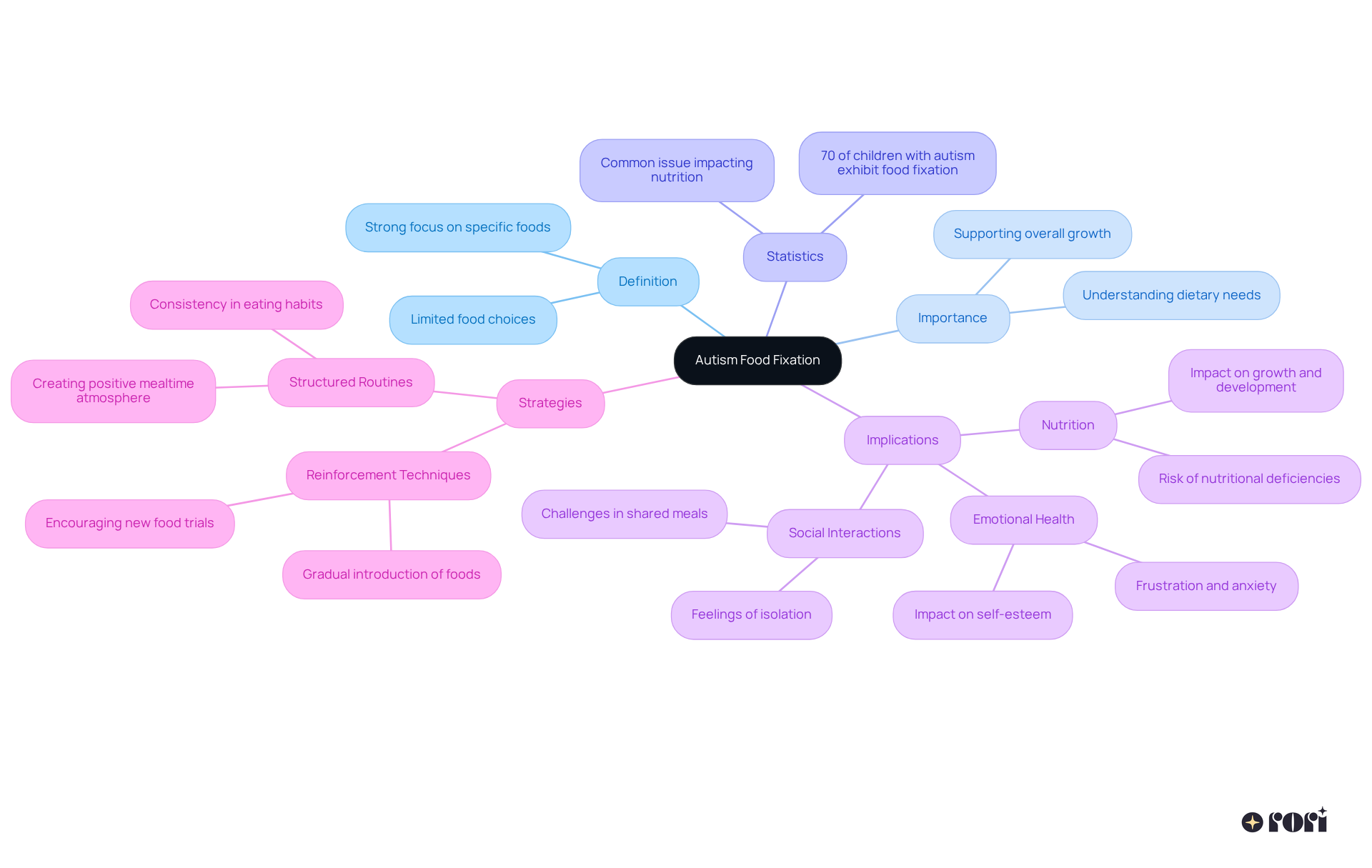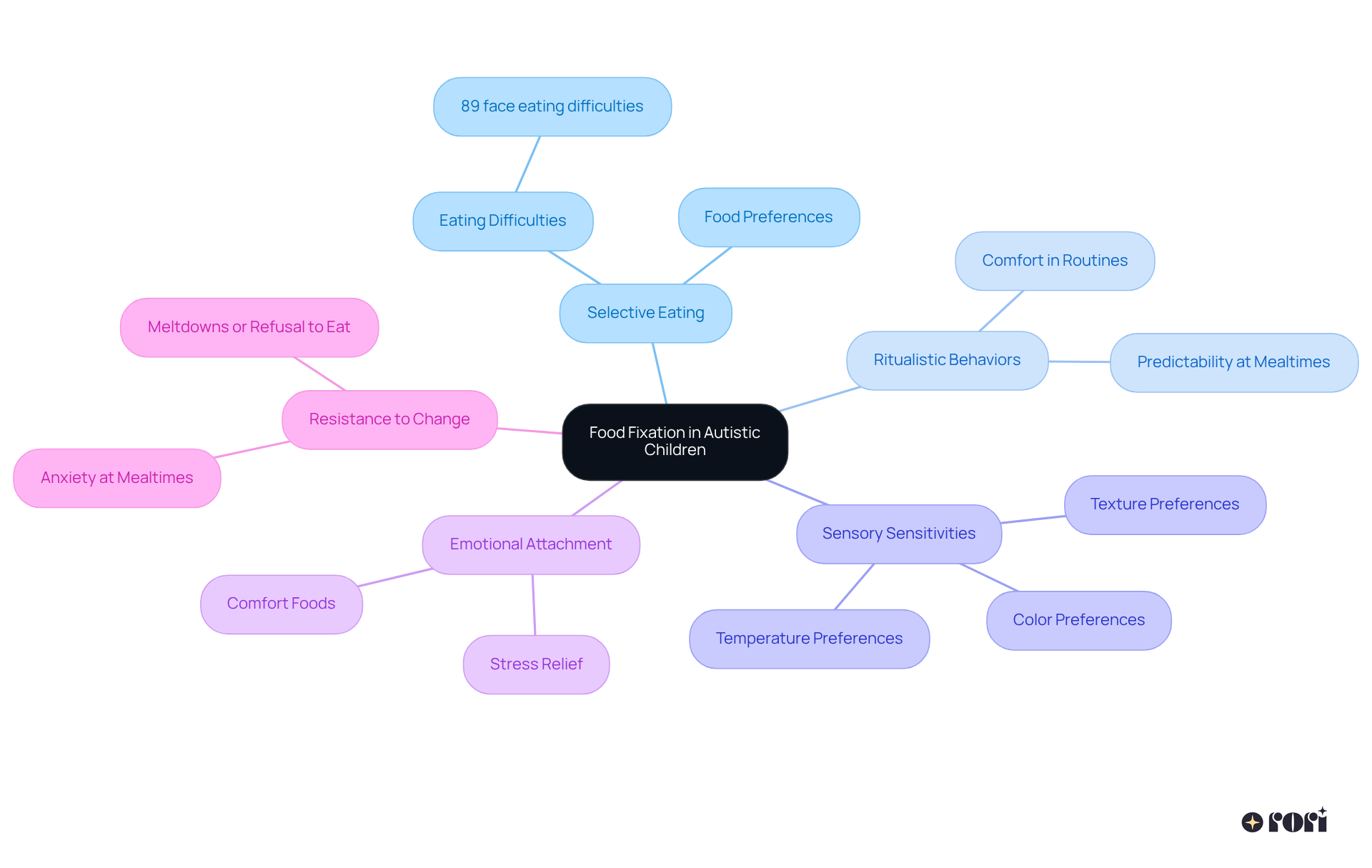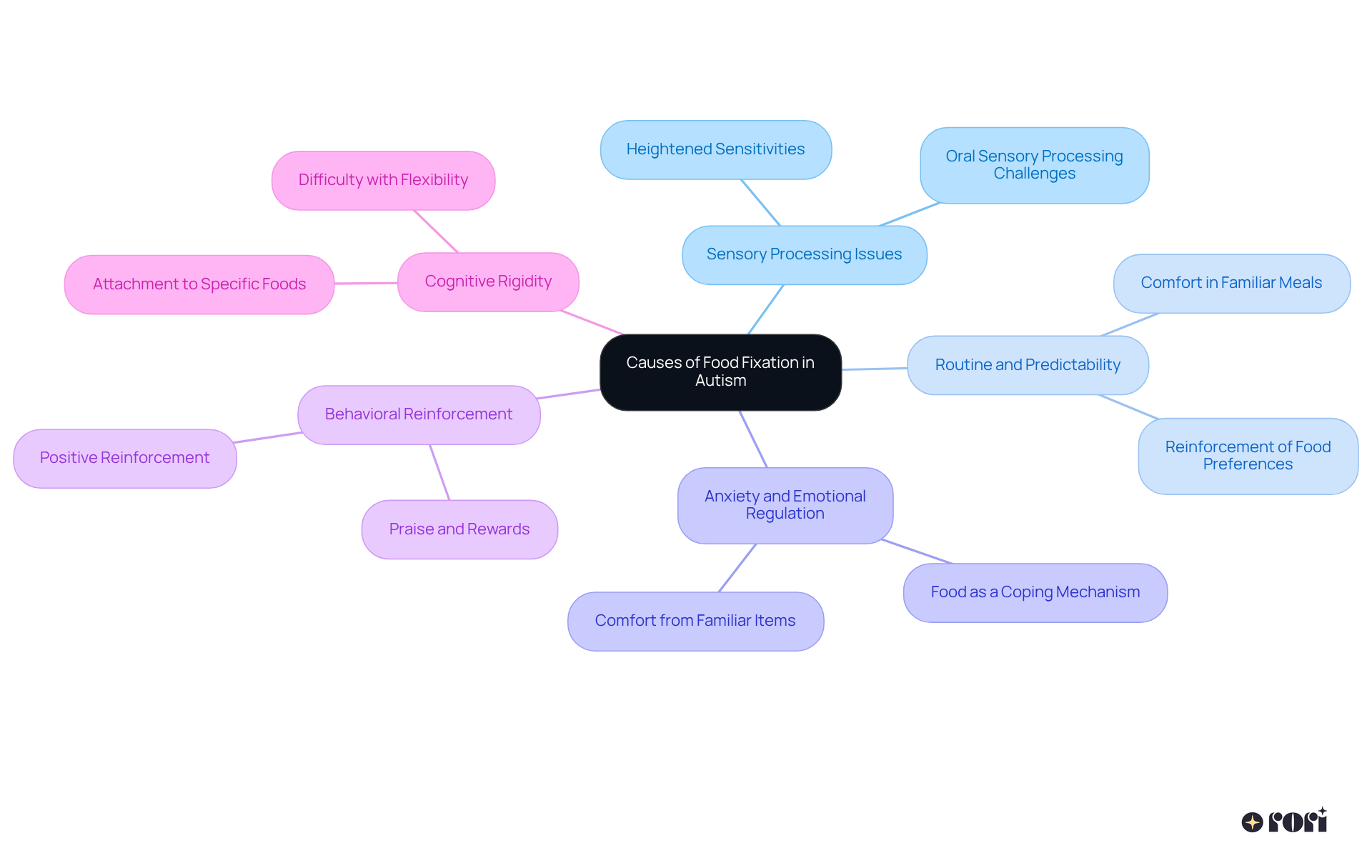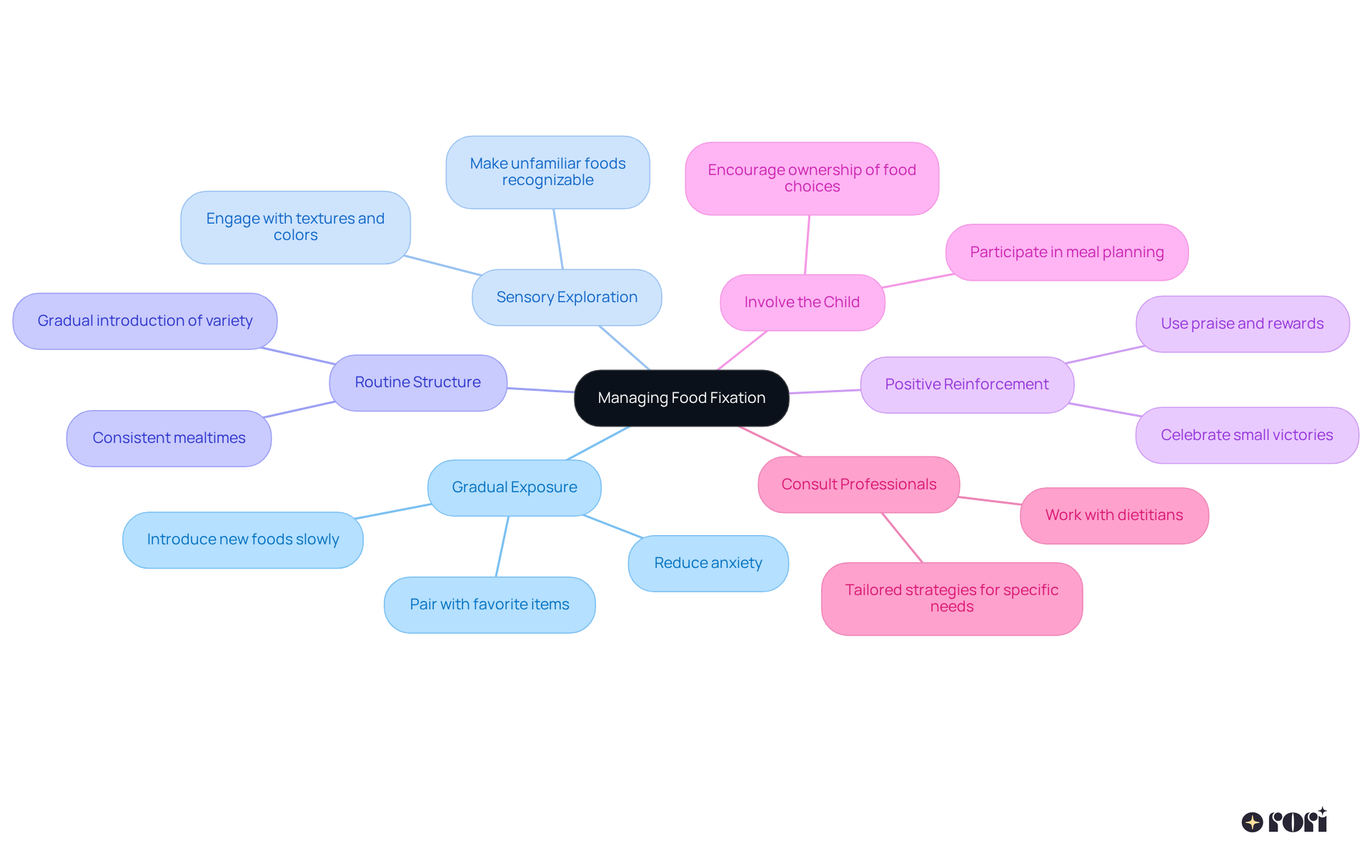This article dives into the world of autism food fixation, a topic that many parents can relate to. It’s all about those strong preferences for specific foods that can really impact nutrition and emotional well-being in autistic children. Understanding the reasons behind these fixations—like sensory processing issues and the comfort of routine—can make a big difference.
By recognizing these causes, caregivers can implement helpful strategies such as:
These approaches not only support healthier eating habits but also enhance the overall quality of life for these wonderful kids. Let’s explore this together and see how we can make mealtime a more enjoyable experience for everyone!
Understanding autism food fixation is crucial because it impacts many children on the spectrum, affecting their nutrition and emotional well-being. Did you know that around 70% of autistic children show some form of food fixation? Recognizing and addressing these behaviors can pave the way for healthier eating habits and an improved quality of life.
But here’s the challenge: how can caregivers effectively manage these fixations while promoting a balanced diet and easing anxiety during mealtimes? Exploring the causes and management strategies of autism food fixation offers valuable insights for parents and support providers alike. Let’s dive in together and discover ways to navigate this journey!
The concept of autism food fixation revolves around having a strong focus on certain foods or food-related behaviors. Many kids with autism exhibit autism food fixation, developing specific likes for certain textures, flavors, or types of food. This can lead to a limited diet, which is really important to understand because it can significantly impact a young person's nutrition, social interactions, and emotional health. By recognizing these behaviors, caregivers and clinicians can come up with effective strategies to support the individual's dietary needs and overall growth.
Did you know that about 70% of kids with autism have some form of autism food fixation? This highlights how common this issue is and the importance of targeted intervention. Addressing these autism food fixations means not just expanding their food choices but also enhancing the quality of life for these young individuals and their families. By delving into the complexities of autism food fixation, we can better support children in achieving balanced nutrition and enhancing their social engagement.
It's crucial to empower support providers with knowledge about ABA principles and strategies. For instance, providers can use reinforcement techniques to encourage kids to try new foods, gradually introducing them alongside their favorites. Plus, having structured mealtime routines can create a positive eating atmosphere. When guardians are equipped with the right knowledge and skills to understand and manage dietary obsessions, they can make informed decisions that positively affect their child's eating habits and overall development. Being actively involved in their child's care allows caregivers to align with therapeutic strategies, leading to better behavioral outcomes and a more balanced approach to nutrition.
Let’s explore this together! By sharing experiences and insights, we can create a supportive community that helps each other navigate these challenges.

When discussing autism food fixation in autistic children, the characteristics can really vary, but there are some common threads that many parents notice. Let’s dive into a few of them!
Selective Eating: Some kids have a strong preference for certain foods, which can limit their options. In fact, around 89% of autistic youths face some eating difficulties, including this selective eating.
Ritualistic Behaviors: Many children find comfort in routines around mealtimes. They might eat the same dish at the same time every day, which creates a sense of security and predictability.
Sensory Sensitivities: Sensory preferences can play a big role too! Kids might love specific textures, temperatures, or colors, leading to strong aversions to others. Understanding these sensitivities is key to making mealtime more enjoyable.
Emotional Attachment: It’s not uncommon for children to develop a strong emotional bond with certain foods. These favorites can serve as a source of comfort, especially during stressful moments.
Resistance to Change: Trying new foods or changing routines can be tough. This resistance can lead to anxiety at mealtimes, sometimes resulting in meltdowns or refusal to eat.
Recognizing these traits is so important for parents and caregivers. By understanding these challenges, you can effectively address and manage autism food fixation, which paves the way for healthier dietary habits and reduces anxiety during mealtimes. We’re here to help you every step of the way!

Food fixation in autistic children, often referred to as autism food fixation, can emerge from a variety of factors, and understanding these can really help parents navigate mealtime challenges. 🌟
Sensory Processing Issues: Many children with autism have heightened sensitivities to sensory input. This means that certain textures or tastes can be either really appealing or completely intolerable. Research shows that oral sensory processing challenges are linked to unusual mealtime behaviors, which can contribute to dietary selectivity.
Routine and Predictability: Autistic children often thrive on routine. Familiar meals can provide a comforting sense of security and predictability in their daily lives. This reliance on routine can lead to a preference for specific foods, reinforcing the autism food fixation.
Anxiety and Emotional Regulation: Food can also act as a coping mechanism for anxiety. Familiar items often provide comfort during stressful times, and this emotional connection can deepen their preferences.
Behavioral Reinforcement: Positive reinforcement, like praise or rewards for eating certain foods, can lead to an obsession with those items. It’s fascinating to see how reinforcement shapes eating habits!
Cognitive Rigidity: Some children may struggle with flexibility in their thinking, leading to a strong attachment to particular foods. This can make it tough to introduce new options. Sensory sensitivities can make this even more challenging, creating a cycle that reinforces autism food fixation.
Recognizing these underlying reasons is crucial for caregivers. It allows them to create nurturing environments that cater to the unique needs of these children. By enhancing their understanding of ABA principles and strategies, parents can make informed choices that positively impact their children's development. Did you know that up to 80% of children with ASD may face feeding behavior challenges? This highlights just how important this issue is!
Using structured assessments, like the BAMBI questionnaire, can really help in understanding feeding behaviors in kids with ASD. Empowered caregivers, armed with the right knowledge and skills, can significantly improve behavioral outcomes and reduce stress within the family dynamic. Let’s explore this together! We're here to help you every step of the way!

Managing autism food fixation in children with autism can feel like a challenge for many caregivers, but there are some friendly strategies you can try through Rori Care's ABA therapy services. Let’s explore this together!
Gradual Exposure: Start by introducing new foods slowly, pairing them with your child’s favorite items. This gentle approach allows your little one to explore without feeling pressured. Over time, this can help reduce anxiety and encourage acceptance of new foods in a supportive learning atmosphere.
Sensory Exploration: Have fun with sensory play! Encourage your child to engage with various textures and colors of food. This can help lessen their sensitivity to unfamiliar items, making them feel less daunting and more recognizable, which aligns perfectly with ABA principles.
Routine Structure: Keeping consistent mealtimes and routines provides a sense of security for children. Gradually introducing variety within this structure can help them feel more comfortable with new foods, which is important for managing autism food fixation and reinforcing positive behaviors along the way.
Positive Reinforcement: Celebrate the small victories! Use praise and rewards when your child tries new foods. This positive reinforcement can encourage them to expand their dietary options, leading to better behavioral outcomes.
Involve the Child: Let your child take part in meal planning and preparation. This involvement can spark their interest in different foods, making them more likely to try new items. It’s all about fostering a sense of ownership and informed decision-making.
Consult Professionals: Don’t hesitate to reach out! Working with registered dietitians or behavior analysts can help you develop tailored strategies that meet your child’s specific needs and preferences. Professional guidance can really enhance the effectiveness of these approaches, empowering you in your supportive role.
By embracing these friendly strategies, you can help your child expand their dietary choices while ensuring a positive and enjoyable mealtime experience. Together, we can create improved behavioral outcomes and strengthen family dynamics!

Understanding autism food fixation is essential for fostering healthier eating habits and enhancing the overall well-being of children on the spectrum. This phenomenon, characterized by a strong focus on specific foods and eating behaviors, can significantly influence a child's nutritional intake, social interactions, and emotional health. By recognizing and addressing these fixations, caregivers can implement effective strategies that not only expand dietary choices but also improve quality of life for both the child and their family.
Key insights from the article highlight the prevalence of food fixation among autistic children, with around 70% experiencing some form of it. The characteristics of food fixation, such as selective eating, sensory sensitivities, and emotional attachments to certain foods, underscore the complexities involved. Understanding the underlying causes, including sensory processing issues and behavioral reinforcement, equips caregivers with the knowledge necessary to navigate mealtime challenges. Practical strategies, like gradual exposure to new foods and positive reinforcement, can foster a more inclusive and enjoyable eating experience.
Ultimately, addressing autism food fixation is not just about diversifying a child's diet; it’s about empowering families and creating supportive environments that nurture growth and development. By engaging with professionals and utilizing tailored strategies, caregivers can significantly enhance their child's dietary habits and emotional well-being. This journey requires patience and understanding, but the rewards of improved nutrition and happier mealtimes are truly invaluable. Let’s explore this together and make mealtimes a joyful experience for everyone!
What is autism food fixation?
Autism food fixation refers to a strong focus on certain foods or food-related behaviors, where many children with autism develop specific preferences for certain textures, flavors, or types of food.
How common is autism food fixation among children with autism?
Approximately 70% of kids with autism exhibit some form of autism food fixation, highlighting the prevalence of this issue.
Why is it important to understand autism food fixation?
Understanding autism food fixation is important because it can lead to a limited diet, significantly impacting a young person's nutrition, social interactions, and emotional health.
What strategies can caregivers and clinicians use to support children with autism food fixation?
Caregivers and clinicians can use reinforcement techniques to encourage children to try new foods, gradually introducing them alongside their favorites, and establishing structured mealtime routines to create a positive eating atmosphere.
How can knowledge about ABA principles help in managing autism food fixation?
Knowledge about Applied Behavior Analysis (ABA) principles equips support providers with strategies to effectively manage dietary obsessions, leading to better behavioral outcomes and a more balanced approach to nutrition.
What role do caregivers play in addressing autism food fixation?
Caregivers play a crucial role by being actively involved in their child's care, aligning with therapeutic strategies, and making informed decisions that positively affect their child's eating habits and overall development.